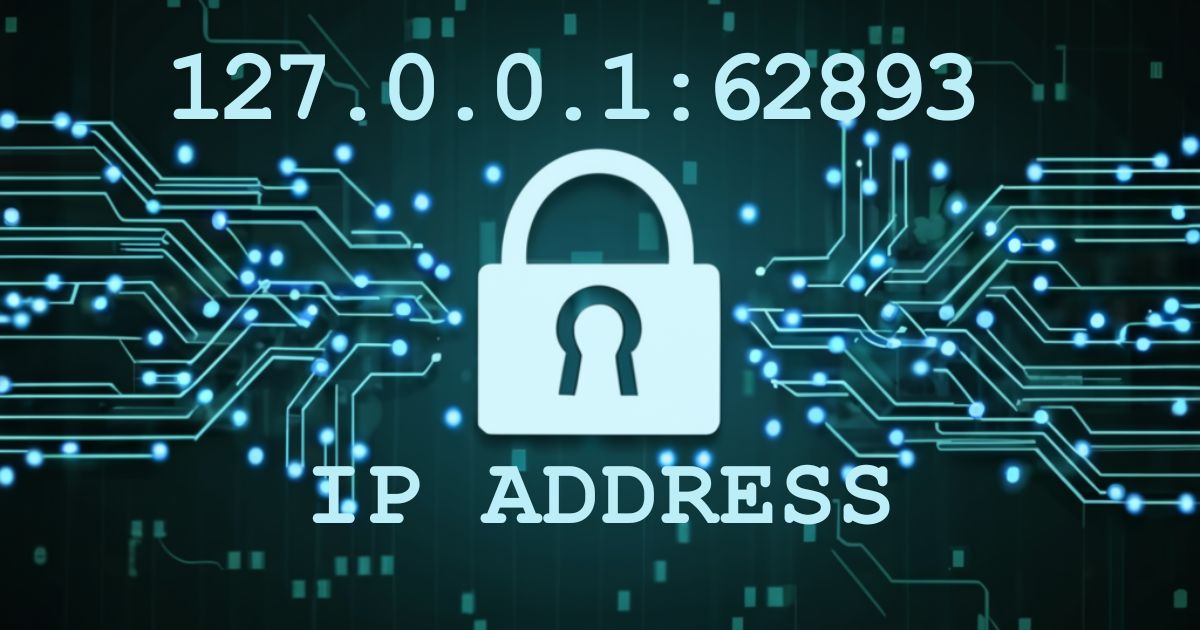Introduction to Networking and IP Addresses
In computer networking, IP addresses are fundamental identifiers used to locate and communicate with devices on a network. The IP address “127.0.0.1” holds special significance as it refers to the localhost, or loopback address, of the computer itself.
What is 127.0.0.1?
“127.0.0.1” is known as the IPv4 loopback address. It allows a device to send network packets to itself, effectively enabling communication with its own network services. This address is commonly used in software development and testing scenarios where applications need to interact with local services without involving external networks.
Understanding Ports and 62893
In networking, ports serve as endpoints for communication in a networked environment. Ports are numbered from 0 to 65535, with certain ranges reserved for specific purposes. The port number “62893” is an arbitrary designation that can be used by applications or services running on a computer to establish connections and handle data exchanges.
Applications and Use Cases
Development and Testing Environments
Software developers often utilize “127.0.0.1:62893” during the development and testing phases of applications. By binding a service or application to this address and port combination, developers can simulate network interactions locally without affecting external resources.
Localhost Services
Various applications, such as web servers, databases, and API services, can be configured to run on localhost using different port numbers. “127.0.0.1:62893” might represent a specific service or application instance that developers are working on, requiring dedicated attention or configuration.
Technical Implementation
Binding Services
To utilize “127.0.0.1:62893,” developers configure their applications to listen on this address and port combination. This involves specifying the IP address and port in the application’s configuration files or directly within the codebase.
Testing and Debugging
During software development, testing on localhost ensures that applications function correctly in controlled environments. Developers can use tools to monitor traffic on “127.0.0.1:62893” and debug any issues that arise during development.
Security and Considerations
Localhost Security
While “127.0.0.1” is inherently secure as it doesn’t communicate over external networks, developers must still implement security measures to safeguard local services. This includes restricting access to sensitive ports and applying encryption where necessary.
Avoiding Port Conflicts
As port numbers are finite and shared across applications, developers should ensure that “127.0.0.1:62893” isn’t already in use by another service on their system to prevent conflicts that could disrupt development workflows.
Future Trends and Applications
Containerization and Virtualization
With the rise of containerization technologies like Docker, localhost configurations, including “127.0.0.1:62893,” are pivotal in orchestrating microservices and modular applications within isolated environments. This approach enhances scalability and deployment flexibility.
Cloud Integration
While localhost addresses like “127.0.0.1” are essential for local development, cloud-native applications increasingly leverage virtual networks and service mesh architectures to manage distributed systems efficiently. These trends influence how developers configure and utilize ports in modern application development.
Conclusion
“127.0.0.1:62893” encapsulates the technical intricacies of networking and software development, offering developers a local sandbox for testing, debugging, and configuring applications. Understanding its role in localhost communication underscores its importance in ensuring robust and secure software deployments. As technology continues to evolve, so too will the methodologies and best practices surrounding localhost configurations, making “127.0.0.1:62893” a cornerstone of modern software development.

